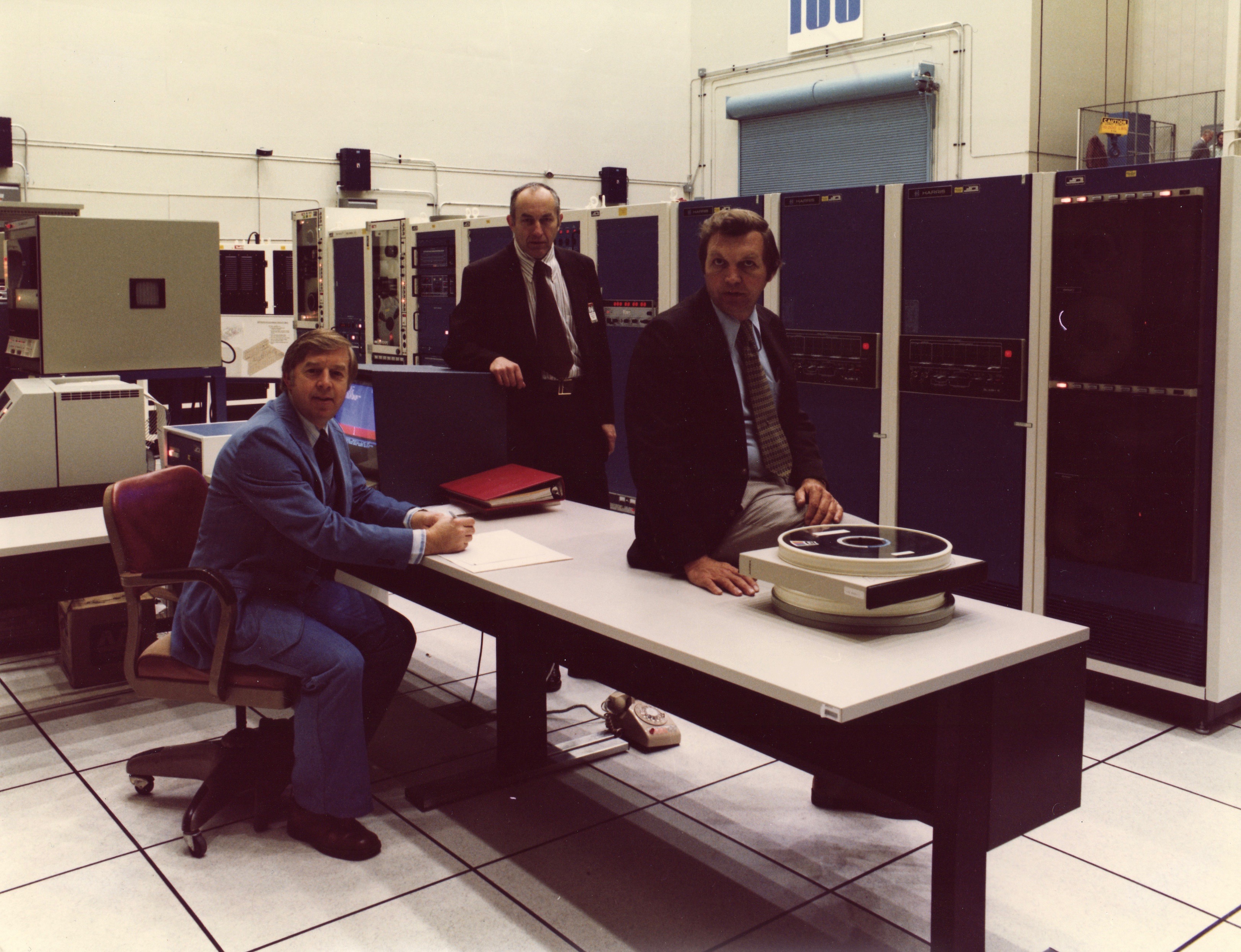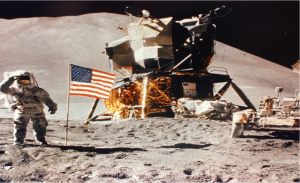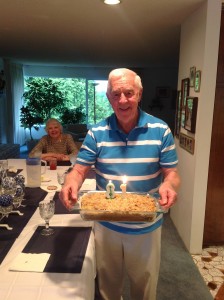
Tom Conover has no plans to go to the moon; he believes that space is too harsh an environment for anyone to go there. And he would know he built and tested the equipment that went up in space, including the lunar rover.
Tom worked for the aircraft manufacturer Boeing as an engineer during the space race.
“We received many government contracts. They would ask us to help take something up to space, and we would do it,” Tom said. “It’s hard to say no to Reagan.”
During this time at Boeing, Tom was contracted to create the lunar rover or, as they called it, the “Moon Buggy.” He specifically worked on the navigation system for the rover, allowing the astronauts to know where they were on the moon in relation to the space station.
“The purpose of the system was to show the astronauts how to get back to the station. It showed how far away they were from the landing site and how long it would take for them to get back,” Tom said. “You would be surprised how easy it is to get lost up there.”
The system itself is pretty simple, according to Tom.
“It had to be,” he said with a laugh. “It had to be simple enough that if it broke down, the astronauts could repair it.”

To Tom, the most interesting thing about the lunar rover was the makeup of the tires. They were made from heavy wires and then formed in the shape of a tire. They were like a spring, Tom said, which gave them good traction. Boeing tested the rover in a classified location which recreated the terrain of the moon.
Scott Conover, Tom’s son, said his father influenced him to also work for Boeing after graduating from BYU.
“I can’t talk a lot about what I do or work on, but a lot of what I do was influenced by what my dad did,” Scott said. “I obviously liked what my dad did because I wanted to be like him.”
However, Tom explained that life creating the moon buggy was not as fun as the name suggests. Most of this information was classified for a long time, so Tom was not able to talk about the specifications of his job with his family.
“It was hard not telling them the exciting parts of my job,” Tom said. “I would look at the buggy and think about the fun my son would have playing on it.”
Tom’s wife, Donna Conover, said she still felt supported while Tom worked away from home.
“When he worked on secret projects, there was a number I could call if I needed to get in contact with him,” Donna said.
Building space equipment had its perks. Tom would frequently travel to Florida and Australia to run final checks on his projects and then watch them get launched into space.
“That was my favorite part,” Tom said. “I think I will have a permanent tan line from watching the rockets in the sun.”
Donna said she could see how his worked helped the nation’s technology.
“He was a pioneer in technology,” Donna said. “He helped develop computers, the space program and missiles that helped launch the U.S. into the technical age.”
After Tom retired, he said he focused on his two favorite things: his family and his love for BYU sports.

Granddaughter Melissa Erickson, a BYU student studying dental hygiene after graduating, explained how Tom used his engineering skills to help with school projects.
“Whenever I needed help building something, I would always call Grandpa,” Erickson said. “One time, I had to build a MagLev train for one of my classes. He spent hours drawing the plans with me, trying to talk me through how aerodynamics work and the mathematics behind it. Then he helped me build it, which took forever because I kept messing up.”
Although Tom never physically went to the moon, a piece of him is still up in space. The rover remains on the moon, serving as a reminder to always be curious and work hard. You don’t need to be an astronaut to go into space; you can be a Boeing engineer, creating the equipment and technology to explore the unknown.




